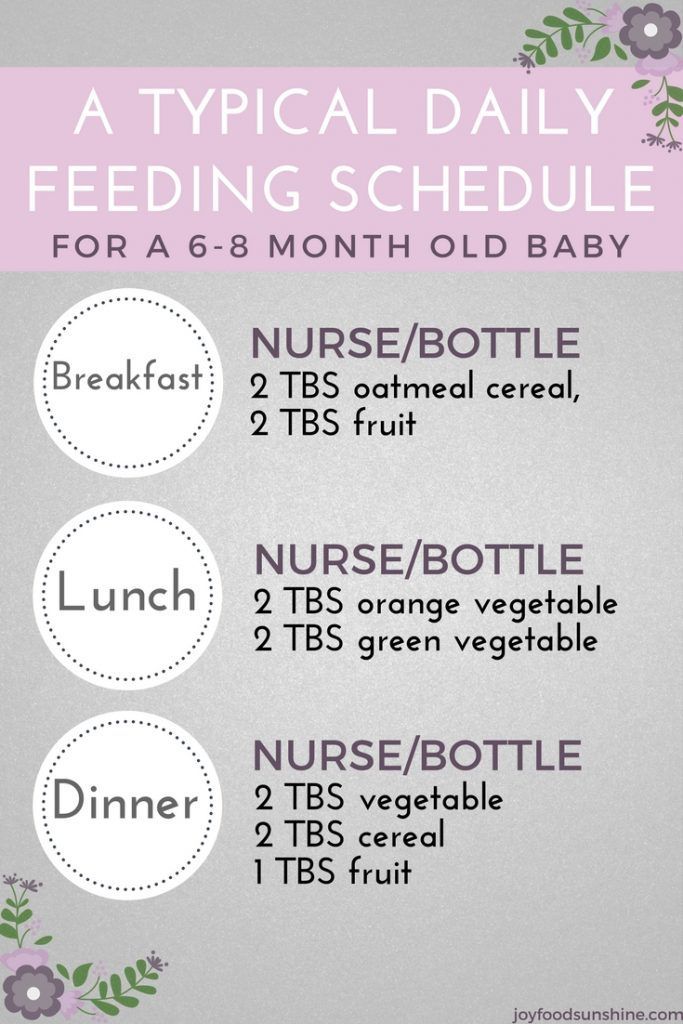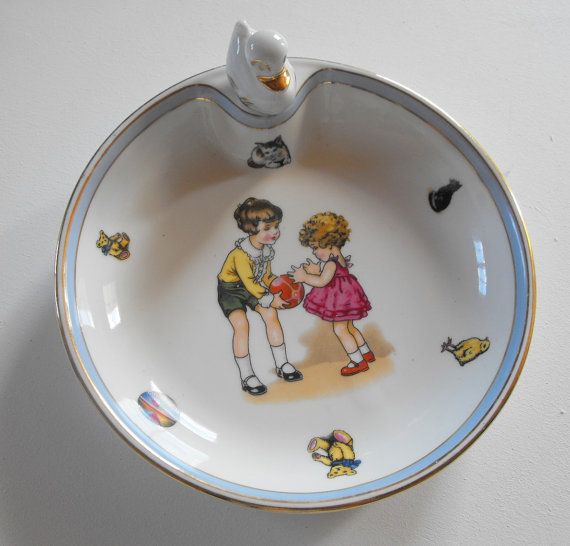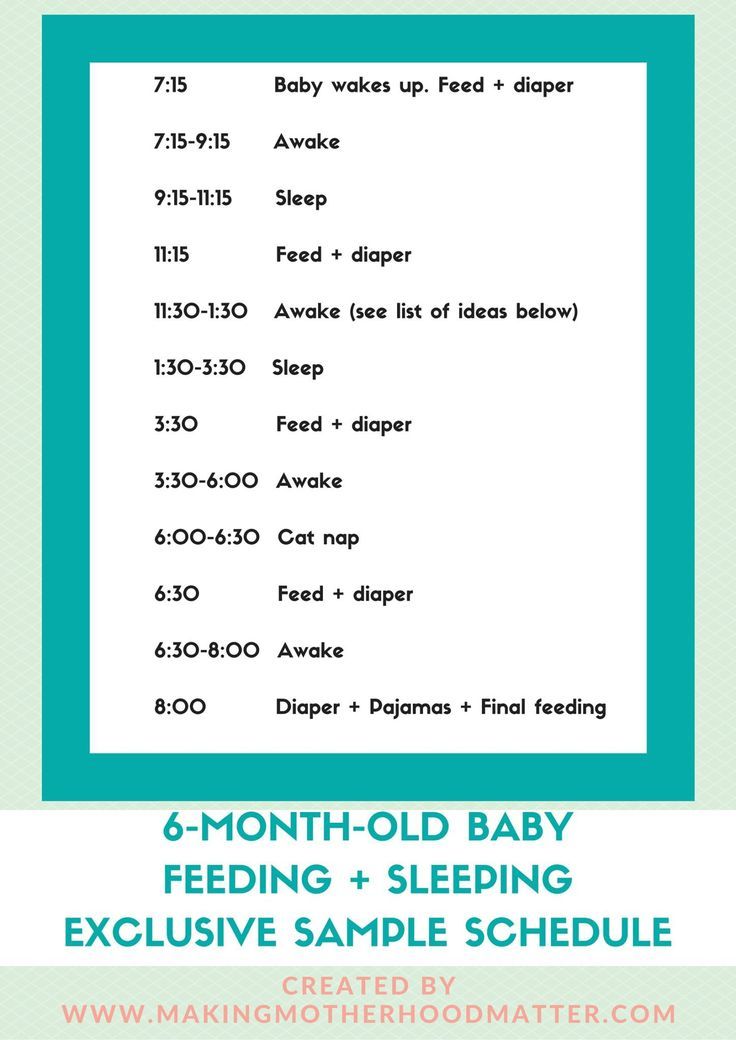What do i feed a baby blue jay
Baby Blue Jays: All You Need To Know
What does a baby Blue jay look like?
How big are baby Blue jays?
Why do you never see baby Blue jays?
What is a baby Blue jay called?
What do baby Blue jays eat?
Do both parents feed baby Blue jays?
What do Blue jay eggs look like?
How long do Blue jay eggs take to hatch?
How many babies does a Blue jay have?
When do Blue jays lay eggs?
How do Blue jays feed their chicks?
How long do baby Blue jays stay with their parents?
Do Blue jays have helpers?
Blue jays (Cyanocitta cristata) have beautiful cobalt-blue plumage and distinctive head crests - they’re the most colorful of all the corvids and one of the most recognisable birds in North America.
Like all corvids, Blue jays are intelligent and resourceful, but what about baby Blue jays? This is a guide to everything you need to know about baby Blue jays!
What does a baby Blue jay look like?
Baby Blue jays are tiny when they hatch and are mainly grey with faint shades of yellow and pink. They’re blind with closed eyes and may be covered in small featherless naked patches.
At hatching
Baby Blue jays are mostly feathered when they hatch but may have naked featherless patches. They’re predominantly grey with pink/yellow plumage on their underside. Their eyes are shut and don’t open for the first 4 to 5 days.
While baby Blue jays will only squirm on their first day, they can shuffle around the nest by day 2. Blue jay hatchlings are tiny, just 50mm long or so.
Blue jay feeding chicks in the nest
Growth and development
Blue jays grow rapidly in their first five days, and their plumage gets noticeably darker, turning to olive. Blue feathers don’t start breaking out until day 14 or so and continue to grow until day 20 or so, at which point the jay fledges.
Full blue plumage development isn’t complete for another month or so after fledging. However, juvenile Blue jays are relatively easy to identify by their blue-grey plumage and buff, fluffy feathers.
A pair of recently fledged blue jays
How big are baby Blue jays?
Baby Blue jays weigh around 5.5g at hatching with a body length of just 51 mm. By the fifth day, Blue jays already weigh approximately 20 to 28g and measure about 76 mm.
Why do you never see baby Blue jays?
Baby Blue jays won’t leave the nest for 17 to 22 days but are unable to fly for another week or so after fledging.
Once fledged, the chicks remain close to their parents. The parents often relocate away from the nest while staying within the confines of deep treetop foliage.
Blue jay fledglings are vulnerable and are pretty easy to spot if they’re roaming around on the ground. However, if you spot one, its parents are probably watching it (and you!) from a treetop perch, so think twice before touching or relocating it.
A blue jay fledgling on the ground
What is a baby Blue jay called?
There is no specific name for baby Blue jays. Just after they hatch, Baby Blue jays are called hatchlings. Then, they develop into nestlings while they spend all of their time in the nest. Finally, baby Blue jays become fledglings, juveniles, and fully grown adults.
Then, they develop into nestlings while they spend all of their time in the nest. Finally, baby Blue jays become fledglings, juveniles, and fully grown adults.
What do baby Blue jays eat?
Baby Blue jays eat whatever their parents bring them, including insects, berries, seeds and grains. While Blue jays also eat meat in the form of small animals and other birds, the young are unlikely to be able to digest it. Soft foods are preferable.
In the first few days after hatching, the male provides the vast majority of food, but the female will join if his haul is insufficient. Then, after a few days, the female typically joins the male to forage more feed for the hungry chicks.
After that, the male usually feeds the nestlings too, but the female has been observed reaching into the chicks’ mouths and redistributing food.
A blue jay feeding one of their chicks
Do both parents feed baby Blue jays?
In the first few days after hatching, the male does most of the foraging and feeds the nestlings. However, the female will often forcibly redistribute food by reaching into the nestlings’ mouths.
However, the female will often forcibly redistribute food by reaching into the nestlings’ mouths.
After around 4 to 5 days, the female typically joins the male. As the birds approach fledging, both birds feed the chicks. Parental feeding carries on for a week or two after the baby Blue jays fledge.
What do Blue jay eggs look like?
Blue jay eggs typically measure 28 mm x 20 mm and are predominantly ovular. colors vary from shades of blue, to green, olive and light brown.
They’re spotted or blotched with brownish markings, mainly towards the larger end. So while Blue jay eggs look similar to most corvid eggs, they vary a lot, especially regarding their color and shape.
A juvenile blue jay, perched on the fence
How long do Blue jay eggs take to hatch?
Blue jay eggs are incubated for around 17 to 18 days before hatching.
How many babies does a Blue jay have?
Female Blue jays typically lay between 2 to 7 eggs, but 4 to 5 is more common. It would be rare for all chicks to survive until adulthood.
It would be rare for all chicks to survive until adulthood.
When do Blue jays lay eggs?
Blue jays almost solely lay eggs in the months of March, April and May.
May egg-laying usually only occurs in the north, or when it’s particularly cold. In the south, egg-laying may start as early as early March, but rarely earlier.
- Michigan: early May
- Minnesota: late April
- Kentucky and Kansas: Mid April
- Arkansas: late March
- Florida: Early March
Three Blue Jay fledglings perched in a tree together
How do Blue jays feed their chicks?
Blue jay parents are presumed to partially regurgitate harder foods into the chicks' mouths, but probably feed most foods to the chicks whole. Larger pieces of food will be torn up before feeding.
Baby Blue jays are fed with berries, insects and seeds. Insects are ideal as they’re soft and high in protein and fats.
How long do baby Blue jays stay with their parents?
Blue jays fledge after just 17 to 21 days after hatching in most cases, but they’ll stay very close to the nest (within 25m or so usually) for another 2 to 3 weeks.
After that, young Blue jays usually stay within the family unit for another 2 to 3 months, at which point they’ve grown out most of their adult plumage and fly off to establish independent territories. Baby Blue jays often continue to harass their parents for food long into summer.
Close up of a baby blue jay
Do Blue jays have helpers?
Helpers are single unpaired birds that help a pair of birds with everything from nest building and incubation to brooding and feeding.
Blue jays sometimes have nest helpers, though this is rarer than it is for other Corvids, e.g. crows.
Blue jay helpers have been observed helping build the nest and feeding the young. It’s unclear whether they’re related to the pair (e.g. last year’s young), or whether they’re unrelated.
Expert Q + A
Question
When are baby blue jays most vulnerable to cats?
BirdFact Team
Generally speaking, baby blue jays are most likely to be predated by cats when they are in the nest - particularly whilst on the rim of the nest, and for the first few days after they fledge the nest.
Blue Jays can be pretty aggressive when it comes to defending their nests, which can often scare the predators away. With cats, similar to other predators, the parents usually will mob the cat in an attempt to scare it away and protect their young.
Ask a question
Do you have a question about this topic that we haven't answered? Submit it below, and one of our experts will answer as soon as they can.
What Do Baby Blue Jays Eat?
Gift Idea
The Birdfy Smart Feeder by Netvue uses AI technology to identify over 6000 species of birds right at your feeder! Easily share short videos with friends, family, and on social media. A great gift for any bird lover this holiday season!
(Get 10% off with code BFH at checkout!)
Buy Discounted For a Limited Time
Blue jays are an easily recognizable, perhaps even iconic, songbird. Their large size, blue feathers, and distinctive call mean that just about anyone can recognize a blue jay. Adults can often be seen eating large acorns, and are drawn to feeders full of things like peanuts and sunflower seeds. They also have been known to occasionally raid the nests of other birds, eating their eggs and chicks. So we know what adult blue jays eat, but what do baby blue jays eat?
Adults can often be seen eating large acorns, and are drawn to feeders full of things like peanuts and sunflower seeds. They also have been known to occasionally raid the nests of other birds, eating their eggs and chicks. So we know what adult blue jays eat, but what do baby blue jays eat?
What Do Baby Blue Jays Eat?
As with most birds, baby blue jays eat more or less the same things that their parents eat. Adult blue jays bring nuts, seeds, insects and small animals back to the nest for their chicks. For at least six weeks after hatching, the chicks are totally dependent on their parents to bring them food, and the parents bring whatever they can find.
Do Baby Blue Jays Eat Worms?
If their parents bring them a worm, they’ll eat it. Caterpillars and seeds are probably more common, but earthworms certainly make their way into many baby blue jay’s diets. Worms are a little hard to find, since they’re usually underground, but occasionally a heavy rain or human activity brings a bunch of worms to the surface, and the blue jays will definitely go after them.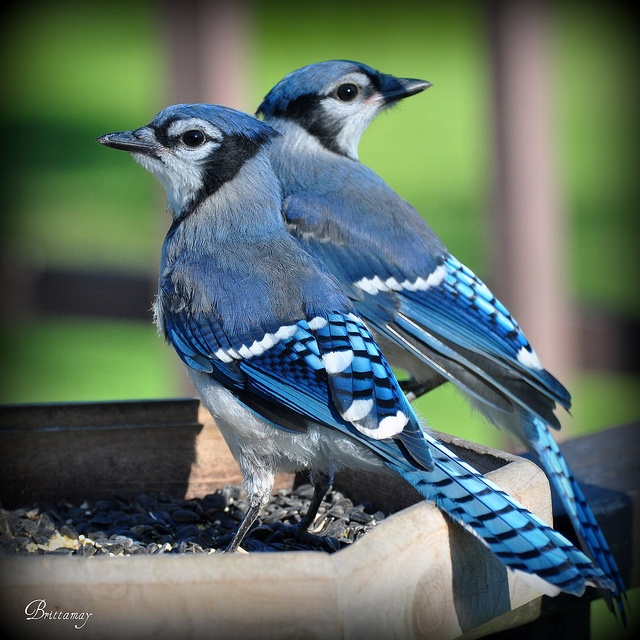 The parents must also take size into consideration, very young nestlings often cannot yet eat large earthworms.
The parents must also take size into consideration, very young nestlings often cannot yet eat large earthworms.
How to Feed Baby Blue Jays
If you need to feed a baby blue jay, use either moist dog/cat food or commercially sold baby bird food, fed through an eye dropper. However in general you should not attempt to do this yourself, and we will talk about why below.
If you’ve found a nest with baby blue jays you suspect is abandoned, don’t jump to any quick conclusions. In most cases of a nest with begging babies, the adults are nearby finding food and will come back periodically to feed the young. Male and female blue jays both take turns feeding the young, however it has been observed that males may often do the majority of the feeding.
Some feedings can be very quick, and the adults will only stop by for a minute before leaving to find food again. Because you could easily miss this quick process, you would have to watch a nest non-stop (not a few minutes at a time) for at least a few hours before you could determine if the babies have potentially been abandoned.
Contacting a Wildlife Rehab Expert
If you have determined that the baby blue jays do need help, it is important to contact a qualified bird rehabber. In many states, only certified rehab specialists are allowed to be in possession of wild birds. Not to mention they are trained in exactly how to care for them.
Care of baby birds can be very tricky. Many nestlings need to be fed every 20 minutes or so for 12 to 14 hours a day! That is a lot of constant time and attention. They also need balanced food with enough protein and nutrients to grow properly. This is why the knowledge and expertise of a rehabber is their best bet for survival.
If you get in touch with a rehabber that isn’t able to take the birds right away, they may instruct you on how to care for them until they can pick them up. For the short term, dog or cat food (moist, fed through a dropper), or specialty baby bird food mix, is often used.
To find a rehabber near you, Google search the name of your state plus “wildlife rehabilitation”, or check your states department of the environment page for a list of licensed rehabbers.
Do Blue Jays Really Raid Other Bird’s Nests?
This is a widely held belief, and it’s not entirely clear why this is so commonly believed. In fact, there’s not really much evidence to suggest that blue jays are nest-raiders. In a study performed on blue jay diet that looked at their stomach contents, researchers found remains of eggs or nestlings in only 1% of adult blue jays, which hardly makes them stand out as “egg snatchers” over other birds.
While blue jays are not big nest-raiders themselves, they have to be on guard against other birds. Crows, especially, will eat blue jay eggs or kill and eat their chicks.
Why Did a Blue Jay Attack Me?
Despite the fact that they are somewhat small in the world of wildlife, blue jays are surprisingly aggressive and fearless. Plenty of people have been attacked by angry blue jays, and most of them were just walking down the street or in their yard when it happened. Fortunately blue jays aren’t really capable of doing any damage, but it’s still an unnerving experience.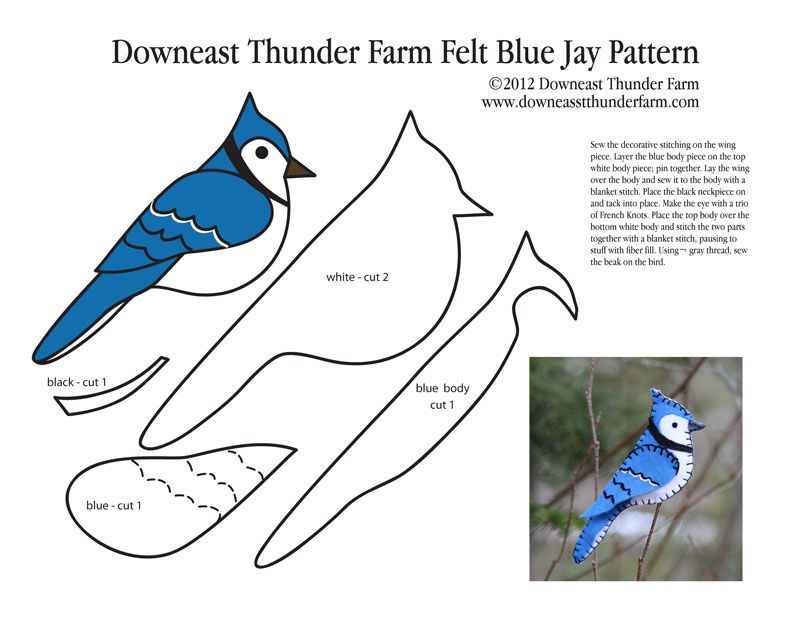
In all likelihood, if you’re dive bombed by a blue jay, you were walking too close to their nest. Blue jays like to build their nests high up in trees and they hide them well, so it’s rare to spot them. The parents, though, are fierce protectors and won’t hesitate to chase of potential predators.
This is especially true around May and June, when the babies are just learning to fly. This is when they’re at their most vulnerable, and the adults get extra protective of them. That’s when most blue jay attacks occur.
Do Blue Jays Like Acorns?
Acorns are a favorite food of blue jays, although they’re a bit too big for the babies to eat. That’s fine, since by the time acorns are available the babies will have left the nest and grown to adult size. Acorns are a favorite for blue jays, and each fall adult birds will hide somewhere between 3,000 and 5,000 acorns in the ground, saving them for the winter months.
In fact, blue jays are credited with spreading oak forests across the U.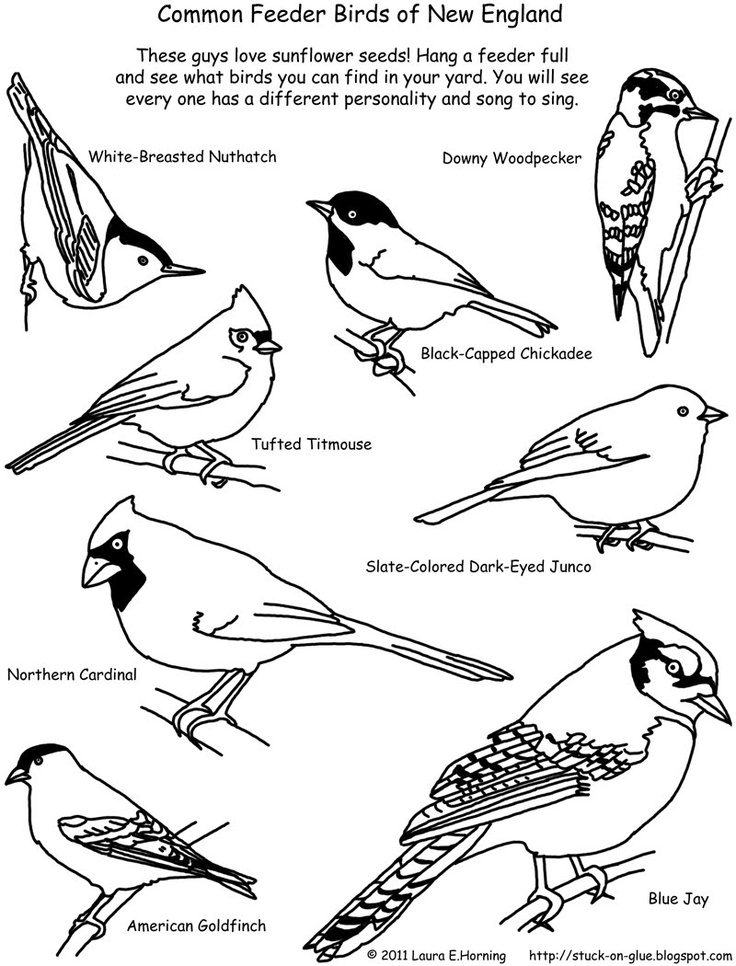 S. While they remember where they put most of those acorns, they always forget some of them, which means that each blue jay ends up planting a bunch of oak trees every fall.
S. While they remember where they put most of those acorns, they always forget some of them, which means that each blue jay ends up planting a bunch of oak trees every fall.
Conclusion
Baby blue jays eat just about anything their parents bring them. Mostly, that means seeds, nuts, and insects. If you find yourself caring for baby blue jays that have been abandoned while waiting for help from a rehabber, pet food or commercially sold baby bird food will help to meet their nutritional needs.
habitats of black-headed, shrubby, saxaul and Yucatan varieties
Blue jay is a bird that fascinates with its beauty and unusualness. She has a bright color and a blue comb on her head. Its main habitat is the USA and Canada. To date, there are about 44 species of this bird.
Contents
Blue jay - description, history of the breed
The bird belongs to the crow family, and its distinctive feature is a rich blue crest, thanks to which it got its nickname "crested". Male jays are slightly larger than females, but sexual divergence does not affect color in any way. nine0003 Blue Jay
Male jays are slightly larger than females, but sexual divergence does not affect color in any way. nine0003 Blue Jay
Interesting fact! Those who have had the opportunity to hold a bird claim that it only looks blue from a distance, but in fact the structure of the feathers gives it color. When light enters them, it is refracted there, which creates a blue glow.
The length of the birds is about 30 cm, but their wingspan during the flight reaches 42 cm. They have a small weight - only up to 100 g. white wings and tail. nine0003 Black-headed Blue Jay
American Blue Jays have strong beaks that can crack even the hardest nuts. There are several varieties of the bird:
- Black-headed blue jay. Its habitat is the mountain slopes and coniferous groves of America. It is distinguished by its thin beak and slightly larger crest. The upper part of the body is black, the lower part is dark blue, and white stripes are visible in the forehead.
- Blue scrub jay.
 It differs slightly from other varieties of birds in its color - fluffy feathers, the belly and chest are gray, and the head, wings and tail are blue. Today it is listed in the Red Book, because it is at the stage of extinction due to frequent fires. Florida is her permanent home. nine0021
It differs slightly from other varieties of birds in its color - fluffy feathers, the belly and chest are gray, and the head, wings and tail are blue. Today it is listed in the Red Book, because it is at the stage of extinction due to frequent fires. Florida is her permanent home. nine0021 - Saxaul jay. The habitat of the bird is Mongolia. Basically, she settles in the bushes in the middle of the desert. Its big difference from other birds is the ability to run and jump quickly, but it is very bad at flying.
- Yucatan jay. Quite a rare, endangered species. To date, little is known about them due to their increased shyness. In front, the plumage of birds is completely black, but behind it is blue. Birds live in the ruins of Mayan cities. nine0020 Black-headed magpie. She lives in Mexico, and in her appearance is very similar to forty. The feathers are distinguished by a blue color from above, but from below the bird is white, it has black blotches on its face and neck.
- Altai jay. Unlike all previous species, these birds do not shy away from people, but rather willingly make contact. Their habitat is Thailand. Young individuals are striped in color, but with age they become completely black with a small white stripe on the neck, and on their head there is a large and beautiful crest. nine0021
Bird habitat
The North American blue jay can be found in parks, gardens, deciduous forests (mixed, oak or beech), and in residential areas. In the western part of the mainland, birds settle mainly in pine forests or shrubs.
Keeping at home
If you are going to have a blue jay at home, you should remember that it will not work to tame an adult bird, so you need to buy a chick. But it will be quite difficult to grow it, so you need to feed the baby every half hour. nine0003
Important! Keeping some types of jays in pairs is prohibited because they do not like competition and will constantly put up fights.
The cage for the blue jay should be as spacious as possible, but it will not be able to stay in it all the time, so the bird must be released daily for several hours. For convenience, it is better to purchase an aviary.
Home aviaryTo maintain the luxurious plumage of a bird, it is necessary to spray it regularly with a spray bottle of warm water. With the right content at home, birds can live for about 18 years. nine0003
Reproduction
With the onset of heat, the mating season begins in jays. It mostly falls in May-June. A noisy female jay calms down so as not to give out her nesting place to a predator. Both parents work on building a nest for the chicks. They break off small twigs from tree branches and build a nest frame. Basically, it is located at a height of no more than 10 m above the ground in coniferous or deciduous trees.
Some varieties of jays cement their nests with clay or earth, and lay lichen, leaves, paper, or whatever is found in ditches and pits, on the bottom. nine0003
nine0003
This is interesting! On average, the female lays about 7 eggs with a bright green color and brown spots.
Incubation of eggs lasts for 18 days. After the birth of the chicks, the parents take care of them, feed them, and on the 12th day of their life, the mother herself goes in search of food. On the 20th day from birth, the chicks can fly on their own, but do not move further than 20 m from the parent nest. And by winter they fly away from the nest, breaking off all family ties.
Mating season of jaysDiet
It is quite varied in jays. These are various plants, animals, mushrooms. For example, nuts, acorns, caterpillars, beetles, lizards, frogs and even chicks of other birds. In some cases, the blue jay can behave in a boorish way, taking food from others or stealing berries from the beds, for example, cherries, sweet cherries. Not all jays are migratory. Some of them stay over the winter, so they need to stock up on food. And they store them in leaves, in the bark of trees, and even buried in the ground. nine0003
nine0003
How long they live in the wild and in captivity
Being in their natural habitat, blue jays live for about 7 years, but with a favorable outcome, they live up to 15 years. At home, with proper care, the birds will delight their owners for 20 years. Raising chicks from an early age, birds are very attached to a person and delight him with their ability to reproduce the most unusual sounds.
The age of a bird can be determined by the color of its eyes. For example, in young individuals, the iris of the eyes is dark brown, but in adults it acquires a light blue color. It is the change of the iris that is the signal for the readiness of mating. nine0003 Food storage for the winter
Fascinating facts about behavior in nature
Jays are good at imitating the voices of other birds, animals, and even some of the sounds that humans create. But in this case, the jay should grow at home and be constantly near the person.
There are many more interesting facts about these birds that you should know:
- A sign of excitement or fear of birds is a tousled crest.
 In this way, she also tries to create an awesome spectacle and scare the predator. nine0021
In this way, she also tries to create an awesome spectacle and scare the predator. nine0021 - Although there are many types of jays in nature, each of them differs in behavior. For example, some birds are monogamous, while others prefer complete solitude.
- Not all members of the species are good fliers. For example, the saxaul jay is notable for its speed of movement on foot and is found most often in Asian countries.
- One of the species of birds - Steller's jay got its name in honor of Georg Wilhelm Steller - a German naturalist. nine0020 Jays stock up on food for the winter, and at one time one individual can bring up to 7 acorns to the nest. The fact is that she has a special bag in her throat under her tongue, where she puts supplies.
Blue jay is one of the most amazing birds, which has a bright color, incredible ability to imitate voices. When starting a bird at home, you need to be fully prepared for the fact that it will require a lot of effort in care and nutrition, but if the correct regime is observed, the bird will delight with its presence for up to 20 years. nine0003 Blue jay
nine0003 Blue jay
Your rating is very important to me
Rate the article from 1 to 5
Average rating 5 / 5. Total ratings 3
No votes yet - be the first to rate!
description of the bird, where it lives, what it eats
The blue jay is a beautiful songbird that comes from far abroad. This bird stands out for its cunning, cunning and artistry. She easily repeats a variety of sounds. This helps her to distract other birds from the food she finds. nine0003
Content
- 1 Blue jay: Description
- 1.1 Appeal
- 1.2 Life and character
- 1.3 How much blue soyshows live
- 1.4 where
- 1.5 What is
- 1.6 Disruption
- 1.7 Natural 1.7 Natural 1.7 Natural 1.7 Natural 1.7 Natural 1.7 Natural 1.7 Natural 1.7 Natural 1.7 Natural 1.7 Natural 1.7 Natural 1.7 Natural 1.7 Natural 1.7 Natural 1.7 Natural 1.7 Natural 1.7 Natural 1.7 Natural 1.7 Natural 1.7 Natural 1.7 Natural 1.7 Natural 1.7 Natural 1.
7 Natural 1.7 Natural 1.7 Natural 1.7 Natural 1.7 Natural 1.7 Natural 1.7 Natural 1.7 Natural 1.7 Natural 1.7 Natural 1.7 Natural 1.7 Natural 1.7 Natural 1.7 Natural 1.7 Natural 1.7 Natural 1.7 Natural 1.7 Natural 1.7 Natural 1.7 Natural 1.7 Natural 1.7 Natural 1.7 natural 1.7 enemies
- 2 Species status and population
Blue jay: description
The blue jay, together with the Steller's black-headed blue jay, are representatives of the genus Blue jays (Cyanocitta), which is considered part of the Corvidae family. A characteristic feature of such a bird is a long tuft of deep blue color. It was he who became the reason that the jay is called crested or blue. It is also sometimes called the North American jay, which refers to the habitat of this bird. nine0003
Appearance
These birds have pronounced sexual dimorphism: females are smaller than males. However, their plumage color is the same - the upper plumage has a beautiful rich blue tint.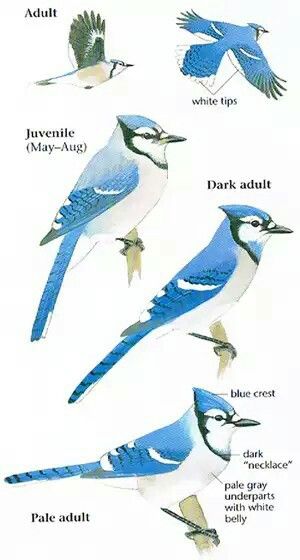
Interesting fact! Anyone who has ever seen a blue jay very close, they say that in fact the blue color is only an optical illusion. After the rays of light hit the feathers, they are refracted in the internal structure, as a result of which a blue glow appears. But as soon as the pen falls out, the blue tint immediately disappears. nine0003
The size of adults is about 25–29 centimeters, while the length of the tail is from 11 to 13 centimeters. The maximum weight of such a bird is 70-100 grams. Its wingspan can reach from 34 to 43 cm. The crest can be painted in deep blue or bluish-violet. Feathers located under the tuft are black in color. The beak, bridle and annular stroke around the eyes have the same shade. The lower part of the body, cheeks and throat are painted in a whitish-gray color. nine0003
The edge of the tail is painted white. At the same time, snow-white spots are located on the tail or wings. Flying and tail feathers crossed by transversely arranged black stripes have a blue color. The eyes of such a jay are shiny, rich black in color, and the paws are of a dark gray hue. It has a powerful beak, thanks to which it splits seeds that have a very strong shell.
The eyes of such a jay are shiny, rich black in color, and the paws are of a dark gray hue. It has a powerful beak, thanks to which it splits seeds that have a very strong shell.
Blue jay
Watch this video on YouTube
Lifestyle and character
Once upon a time, M. Twain joked that blue jays are considered birds only because they have feathers and do not go to church. And so they are very similar to humans: cunning, able to easily deceive and know how to swear.
Interesting fact! Jay often imitates the call of a hawk, due to which it easily scares away other birds, which include starlings, woodpeckers and Florida scrub jays, from the found food. She also scares away gray squirrels with her cry. However, such a trick scares off competitors for a short time, and soon they return to the forest feeder again. nine0003
Blue jays have a very busy social life. They form both pair unions and family groups, and not very large flocks. Such birds communicate with each other with the help of a voice, body language can also be involved (with the help of a tuft). If the bird is worried or very surprised, then its feathers on the crest rush forward. If the jay is angry, then her tuft takes a vertical position. And in a frightened bird, the crest is ruffled and somewhat resembles a brush. nine0003
They form both pair unions and family groups, and not very large flocks. Such birds communicate with each other with the help of a voice, body language can also be involved (with the help of a tuft). If the bird is worried or very surprised, then its feathers on the crest rush forward. If the jay is angry, then her tuft takes a vertical position. And in a frightened bird, the crest is ruffled and somewhat resembles a brush. nine0003
Such a bird is an excellent imitator. She can imitate a variety of sounds that she once heard: from pleasant melodies to the creaking of an old door. She can scream loudly (as birds of prey do), whistle melodies, meow, imitate the chime of bells, bleat and even bark. A caged bird can quickly learn to talk like a human. And jays are able to squeal when they see an approaching danger. Thus, they not only inform all the inhabitants of the forest about the approaching enemy, but can also unite a large number of birds to fight back. nine0003
In adults, molting is observed in July-September, and in young ones - at the end of the summer period. Like most birds, during molting, jays resort to procedures that are also called anting: they stuff live ants under their feathers or arrange a bath in an anthill. This allows the jays to clear themselves of pests. Crested jays living in the northern part of their species range fly to the southern regions for wintering. As a rule, the flight takes place during daylight hours, and for this, birds stray into small (from 5 to 50 birds) or large (maximum 3 thousand birds) flocks. nine0003
Like most birds, during molting, jays resort to procedures that are also called anting: they stuff live ants under their feathers or arrange a bath in an anthill. This allows the jays to clear themselves of pests. Crested jays living in the northern part of their species range fly to the southern regions for wintering. As a rule, the flight takes place during daylight hours, and for this, birds stray into small (from 5 to 50 birds) or large (maximum 3 thousand birds) flocks. nine0003
How long do blue jays live
The average life expectancy of such a bird varies from 10 to 18 years.
Where it lives
The natural habitat of the blue jay is North America, while it inhabited almost half of this continent. Moreover, it is most widely distributed in Canada and the eastern part of the United States. Where the jay comes from, it is called Blue Jay. Its habitat extends to the Gulf of Mexico. In western North America, the range of the blue jay is closely intertwined with that of the Steller's black-headed blue jay. nine0003
nine0003
To date, scientists have described four subspecies of the blue jay, which, among other differences, differ in habitat:
- Cyanocitta cristata cyanotephra - this subspecies lives in Texas, Oklahoma, Colorado, Wyoming, Kansas and Nebraska;
- Cyanocitta cristata semplei is an inhabitant of northern Florida;
- Cyanocitta cristata bromia - representatives of this subspecies live in Northern Canada, Missouri, Newfoundland, North Dakota and Nebraska; nine0021
- Cyanocitta cristata cristata - Found in Texas, Illinois, Florida, North Carolina, Tennessee, Missouri, Virginia and Kentucky.
This jay most often settles in mixed (beech and oak), as well as in deciduous forests. Less often, it settles in dense thickets of shrubs or in pine forests, which is most often observed in the western part of the range. This bird is not shy, and it is not afraid of people. Therefore, often its nests can be seen in residential areas (in gardens and parks). Individuals living in the southern part of the range are smaller in comparison with their "northern" relatives. nine0003
What it eats
The blue jay is an omnivore. In addition, she is very brazen, so it will not be difficult for her to take away food from other birds. Also, this bird is completely unsqueamish, so it can eat carrion.
Approximately 22 percent of the diet consists of food of animal origin, and 78 percent of plant foods. And these are:
- fruits and seeds;
- caterpillars and grasshoppers;
- birds' eggs and birds themselves;
- berries and acorns;
- beech nuts;
- centipedes, spiders and beetles;
- lizards, frogs and mice.
Those blue jays that don't fly away in the winter make food supplies for themselves. To do this, they bury seeds and acorns in the soil and put them under the fallen leaves or under the bark.
Interesting fact! One jay can carry 5 acorns at once.
3 of them are in her crop, 1 in her mouth, and 1 more in her beak. During the autumn period, one bird can prepare from 3 to 5 thousand acorns. nine0003
Blue jay eating
Watch this video on YouTube
Reproduction and offspring
Blue jay mating season starts in spring when the weather is warm. In the northern part of the range, the mating season is most often observed from May to June. In individuals living in the southern part of the range, reproduction is observed 2 times during the year. At this time the usually noisy birds become very quiet as they try to hide the nest location from predators. nine0003
Both parents take part in the “building” of the nest. They make a frame from rods that break off from trees. As a rule, they choose deciduous or coniferous trees for arranging nests. They make them in the fork of side branches at a height of about 3-10 meters.
The average height of the nest frame is 10 centimeters, while its diameter reaches about 20 centimeters. To compact it, jays use branches and roots found near the nesting site (near trees or in a ditch). Jays often resort to "cementing" building materials, using clay or soil for this. At the bottom they lay paper, foliage, grass, wool, lichens, rags. nine0003
To compact it, jays use branches and roots found near the nesting site (near trees or in a ditch). Jays often resort to "cementing" building materials, using clay or soil for this. At the bottom they lay paper, foliage, grass, wool, lichens, rags. nine0003
Until the construction of the main nest is completed, the birds make several additional nests as part of the mating ritual. In addition, the male feeds the female during courtship. To do this, the female sits on a branch and behaves like a hungry chick. The male flies up to her and gives food.
Interesting fact! Jay can lay 2-7 eggs at a time, pale blue with brownish or greenish yellow spots. They hatch eggs from 16 to 18 days. In the event that a nest is discovered by a predator, the female can fly away from it forever. nine0003
Newly hatched chicks are blind and weak. Therefore, parents have to get them food, provide protection, clean and heat. The opening of the eyes occurs on the 5th day, and already on the 8th day the first plumage begins to break through.
After the chicks are 8-12 days old, the female goes in search of food. When there are 1–3 days left before independent departure, the young growth fearlessly jumps from branch to branch. But at the same time, they do not move away from the nest by more than 4.5 meters. On days 17–21, the chicks already leave their native nest, but at the same time they move away from it by a maximum of 20 meters. The grown chicks are near their parents until the onset of the autumn period. By the onset of winter, family ties will already be cut off completely. nine0003
Natural enemies
Blue jays have very few natural enemies. As a rule, they include large owls and falcons.
Species status and population
Crested jays are useful birds. They contribute to the extermination of forest pests (for example, caterpillars, weevils and May beetles), and they are also distributors of acorns and seeds. However, jays can also harm nature. The fact is that they contribute to the ruin of the nests of small birds, pecking out eggs in the nests, and also killing defenseless chicks.



